Website downtime occurs when your site becomes unreachable or unusable, even if only for a brief moment. Many business owners consider downtime a rare inconvenience, but the financial and reputational damage accumulates much faster than expected. For example, when Amazon experienced a major outage during Prime Day, the company lost millions of dollars in revenue within just a few minutes. In today’s digital world, where users demand instant access to online services, even short interruptions can lead to missed sales, frustrated visitors, and a tarnished brand image. Understanding the true impact of website downtime is essential to protecting your business from unnecessary losses and maintaining a reliable online presence.

Introduction to Website Downtime
Website downtime is the period when a website or web service becomes inaccessible to users, preventing them from accessing the information or online services they need. This can happen for a variety of reasons, including server crashes, network failures, or scheduled maintenance. Even brief periods of downtime can disrupt user experience and lead to significant consequences for businesses, such as lost revenue and diminished trust.
To minimize downtime and keep your website available, it’s essential to implement website monitoring strategies. Using a website uptime checker or subscribing to website monitoring services allows you to continuously monitor your website status and uptime. These tools can alert you to issues before they escalate, helping you maintain seamless access for users and ensuring your web services remain online and reliable. Proactive monitoring is a critical step in safeguarding your website against unexpected outages and maintaining a positive reputation with your users.
How Much Money Disappears Every Minute: Downtime Costs
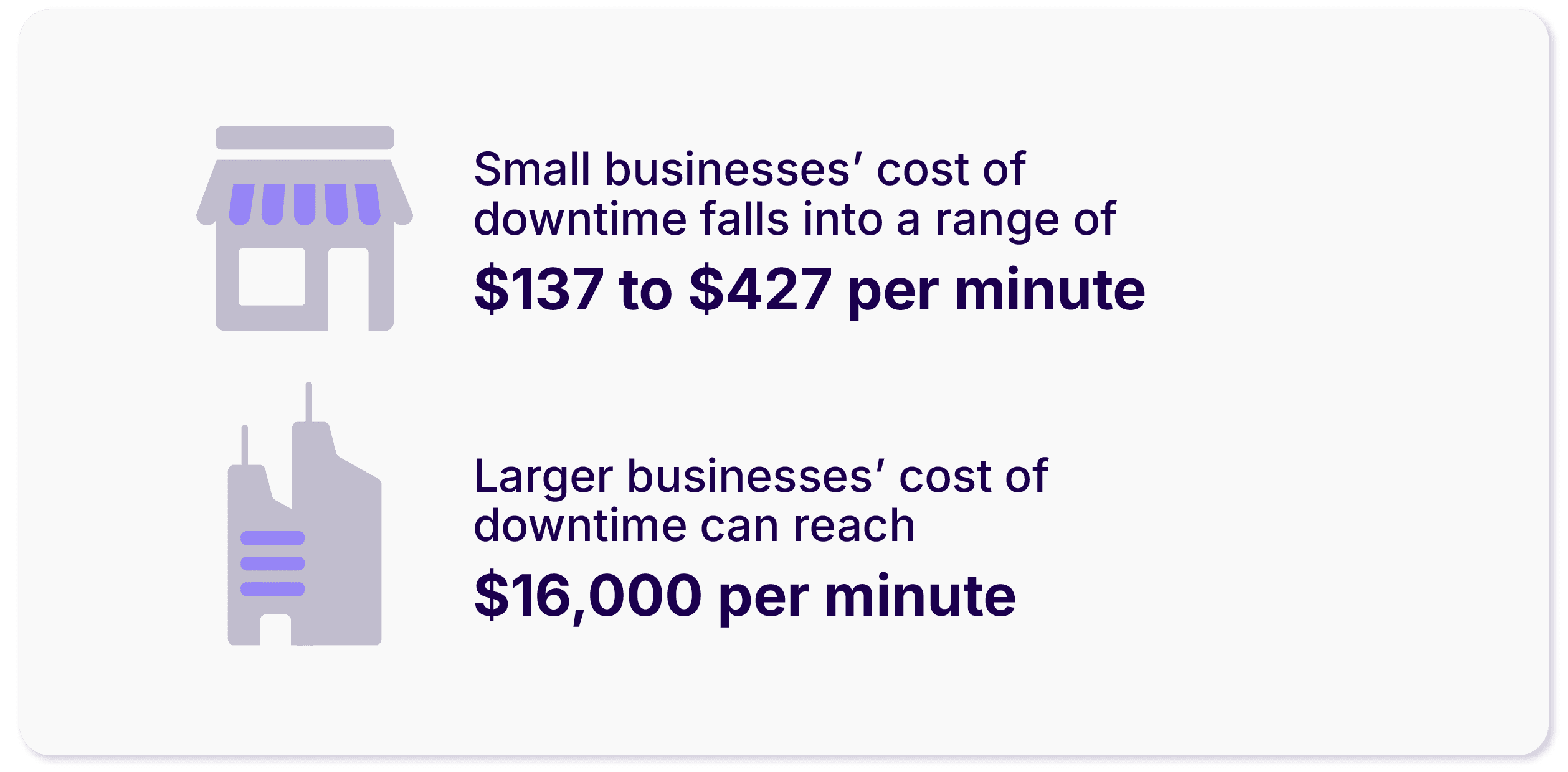
Industry research reveals that website downtime can cost businesses anywhere from a few hundred dollars to hundreds of thousands per minute, depending on the size of the business and its traffic volume. For small businesses, just one hour of downtime can easily translate into thousands of dollars in lost revenue. Larger companies, especially ecommerce platforms, face even steeper losses. Every minute your site is inaccessible means fewer transactions, abandoned shopping carts, and a diminished likelihood that users will return.
Additionally, search engines like Google react negatively to prolonged downtime or slow response times, which can lead to lower search rankings and further reduce your site’s visibility and traffic. This combination of lost sales and decreased search engine presence makes website downtime one of the most silent yet serious threats to your bottom line.
Short Term Pain vs. Long Term Brand Damage
The immediate financial losses from downtime are just the beginning. In the short term, customers experience frustration, conversion rates drop, and user engagement declines sharply. However, if downtime occurs frequently or lasts for extended periods, the long-term consequences become even more damaging.
Visitors start to question your site’s reliability, which slowly erodes brand trust. Over time, customers may turn to competitors while your digital doors remain closed. Rebuilding trust after repeated outages takes significant time and effort, and many users who leave due to downtime never return. This gradual decline in customer loyalty and brand reputation is often more costly than the immediate revenue loss.
Real Companies Have Felt the Sting
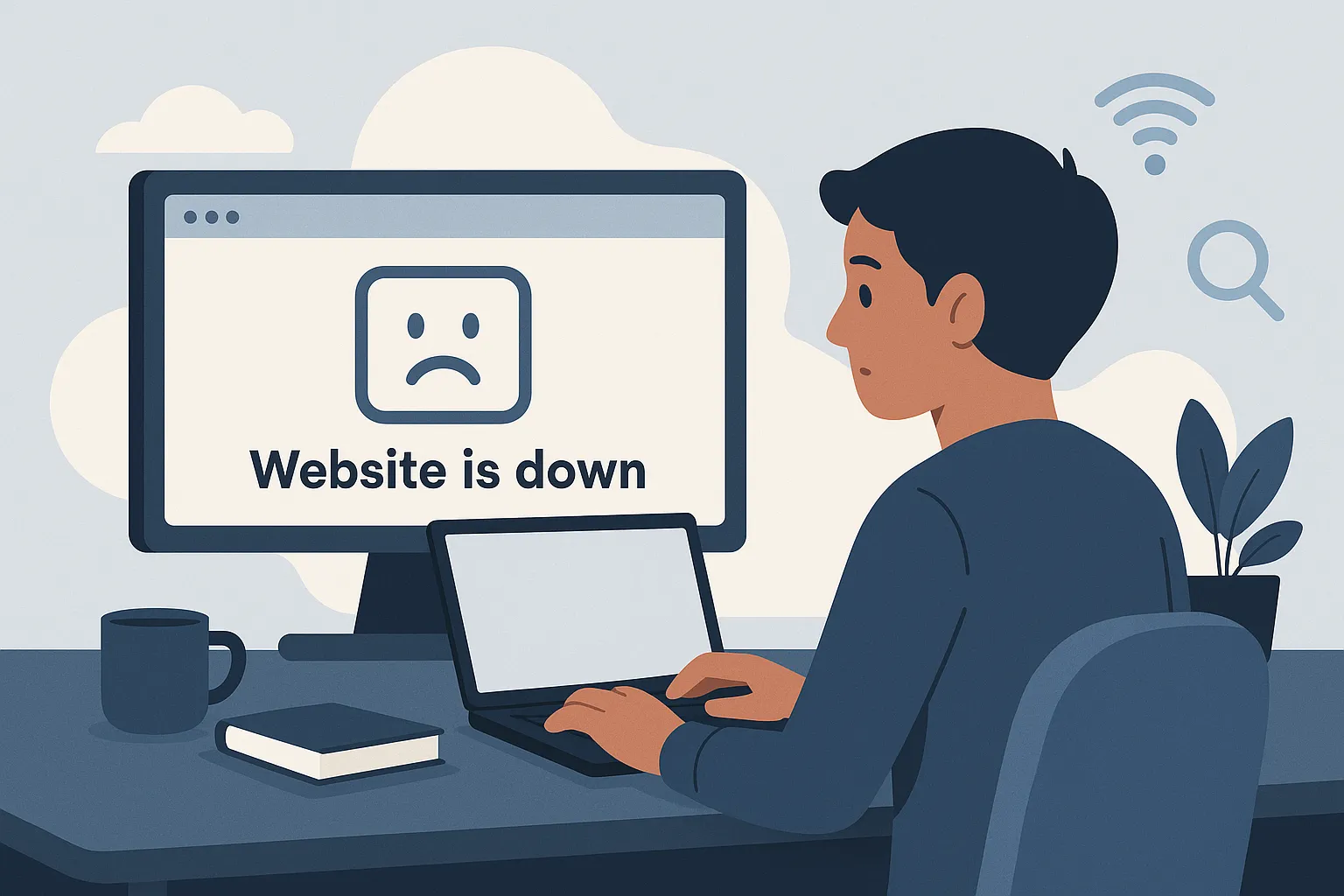
Numerous real-world examples demonstrate how website downtime can lead to costly lessons. Retail brands have lost millions during holiday periods when sudden spikes in visitors overwhelm servers, highlighting the critical need to handle traffic surges with scalable hosting solutions and robust infrastructure to prevent sites from going offline. Software companies have experienced subscriber churn after repeated outages damaged user confidence. Even major tech platforms have reported public outages that halted transactions worldwide and sparked widespread frustration on social media platforms like Twitter and Facebook.
These cases show that no business is too big or too small to be affected by downtime. Every website is vulnerable, and the impact is always more severe than anticipated.
Domain Name Considerations
Your domain name is more than just your website’s address, it’s a key factor in your site’s availability and reliability. Choosing a domain name through a reliable hosting provider ensures that your DNS records are managed correctly, so users can access your website without interruption. Proper DNS management is essential for maintaining website availability, as even minor misconfigurations can lead to downtime and make your site inaccessible to visitors.
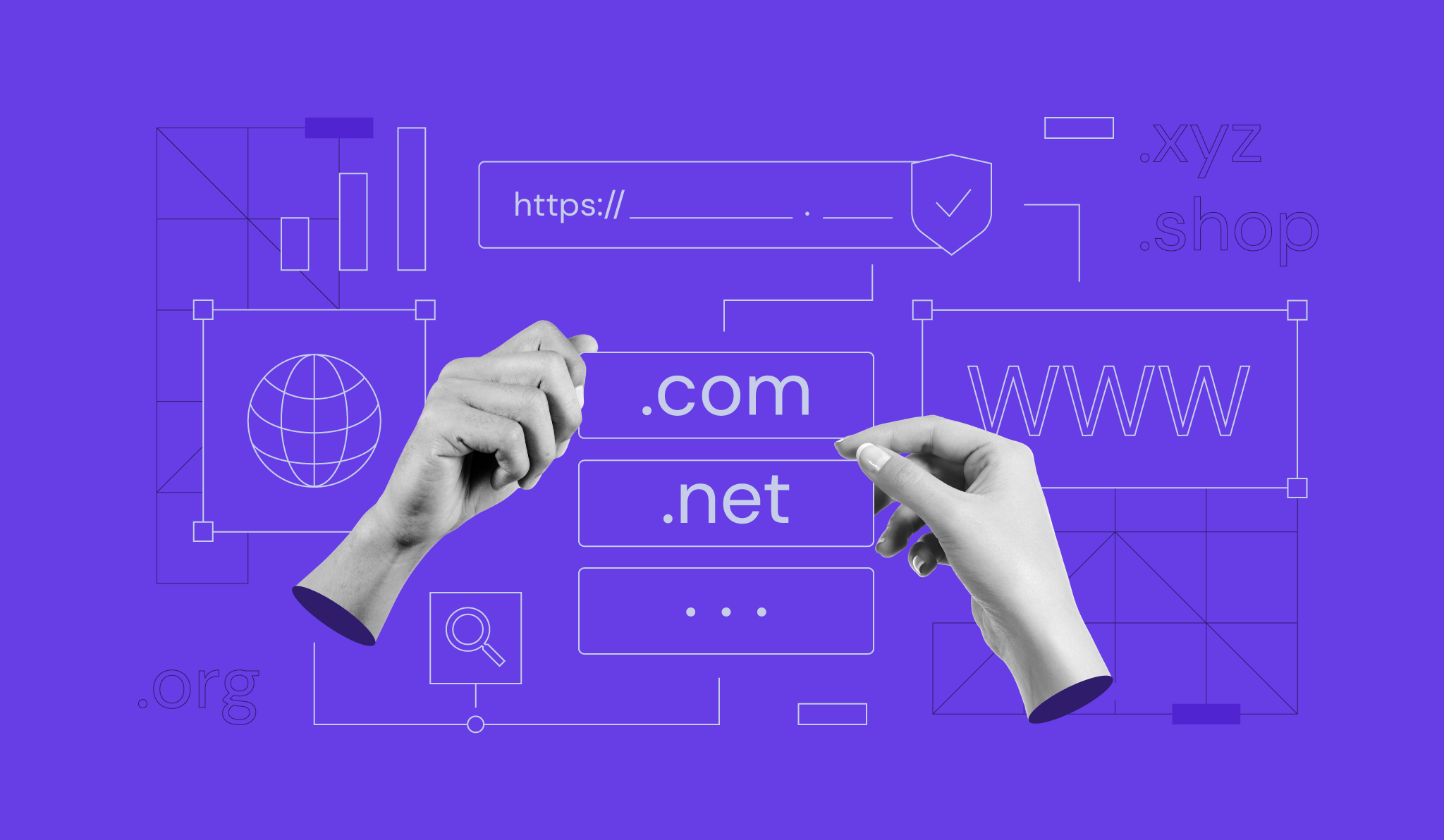
Additionally, your domain name can influence your SEO performance, with certain names being more favorable for search engine rankings. It’s also important to stay on top of domain name registration and renewal to avoid accidental expiration, which can cause unexpected downtime and disrupt access for your users. By selecting a suitable domain name and partnering with a reliable hosting provider for DNS services, you can help ensure your website remains accessible, reliable, and optimized for both users and search engines.
Hosting Provider Selection
The choice of hosting provider plays a pivotal role in your website’s uptime and overall reliability. A reliable hosting provider should deliver strong uptime stats, robust server performance, and the ability to handle unexpected traffic surges without compromising accessibility. While shared hosting may be cost-effective, it often struggles to support high-traffic websites, making dedicated or cloud hosting a better option for growing businesses.
When evaluating hosting providers, look for those that offer clear uptime guarantees, fast response times, and essential features like SSL certificates to keep your site secure and accessible. Reliable hosting providers also offer scalable solutions, allowing your website to remain online and responsive even during peak periods. By prioritizing server performance and uptime, you can significantly reduce the risk of downtime and ensure your website remains a dependable resource for your users.
Website Performance Optimization

Optimizing your website’s performance is essential for preventing downtime and delivering a fast, reliable experience to your users. Techniques such as minimizing HTTP requests, enabling browser caching, and leveraging a content delivery network (CDN) can dramatically improve load times and reduce the strain on your servers. Regular website monitoring with tools like Uptime Robot provides detailed information on uptime and response time, helping you quickly identify and resolve technical issues before they lead to downtime.
By continuously monitoring your site and addressing performance bottlenecks, you not only minimize the risk of outages but also enhance user satisfaction and boost your search engine rankings. Don’t forget to schedule regular updates and backups as part of your optimization strategy—these steps help keep your website accessible, secure, and resilient against unexpected technical challenges.
Preventing Downtime with Regular Backups
Regular backups are a crucial safeguard against downtime, ensuring that your website can be quickly restored in the event of an outage, technical issue, or malware attack. By scheduling frequent backups of your site’s files, databases, and configurations, and storing them off-site or in the cloud, you protect your data from local hardware failures and other risks.
Setting up instant notifications and alerts allows you to be alerted instantly if any issues arise, so you can act quickly to minimize downtime costs and keep your website online. Regular backups not only help prevent data loss but also ensure that your site remains accessible to users and search engines, even in the face of unexpected disruptions. With a solid backup and alert system in place, you can maintain your website’s availability and reputation, providing peace of mind for both you and your visitors.
How Cromojo's Website Monitoring Helps Keep Your Business Safe
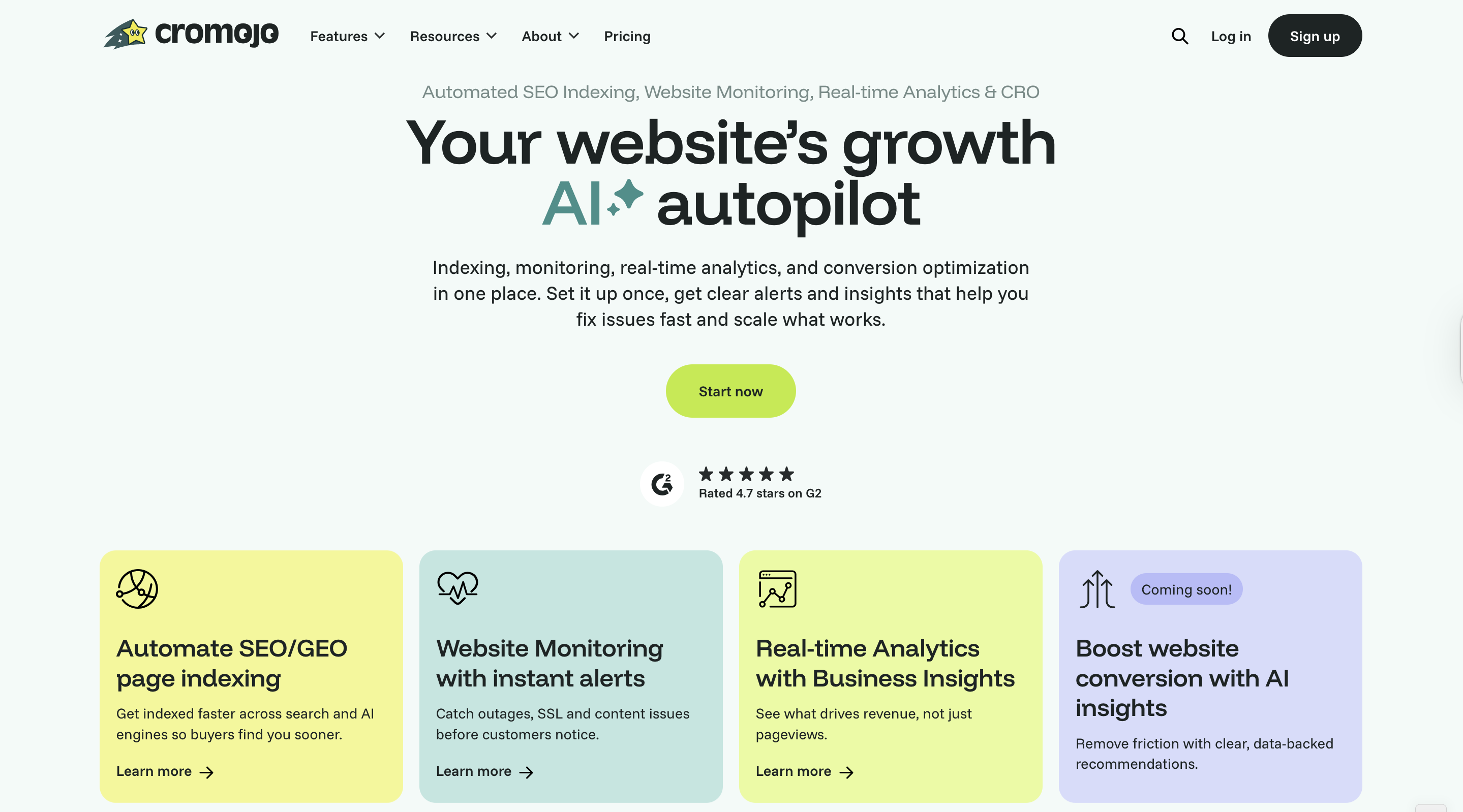
Cromojo offers a comprehensive website monitoring system designed to help you stay ahead of downtime. Cromojo provides a free checker tool that lets you check if a website is down by simply entering a URL, making it easy to verify site status at any time.
This service continuously monitors your site uptime and provides instant alerts the moment an outage or performance issue is detected. Cromojo can ping your website to test server connectivity, monitor page loading times, and assess the performance of individual page elements to ensure optimal performance. Its reporting and reporting features generate detailed reports on website status, response times, and downtime history, giving you comprehensive insights into your site's health. Cromojo also simulates regular users performing actions on your site to ensure all critical functions are working as expected. Additionally, Cromojo helps you determine if downtime is affecting everyone or just me, and assists in troubleshooting issues related to your host, domain names, and internet connection.
With detailed information on server performance, response times, and website availability, Cromojo empowers you to minimize downtime and maintain a smooth user experience. Its uptime monitoring tools also help you track uptime stats, confirm site status, and schedule maintenance to avoid unexpected disruptions.
Final Thoughts
No website is completely immune to downtime, but the damage caused by outages does not have to be severe. With the right website monitoring tools in place, you can detect problems early, reduce the impact of outages, and prevent minor interruptions from turning into expensive disasters. A solution like Cromojo’s uptime checker and monitoring services ensures your digital presence remains strong, your site remains accessible, and your business stays protected from the hidden costs of website downtime. Don’t wait until your customers notice, monitor your website status proactively and keep your online services running reliably.

.png)
.png)


